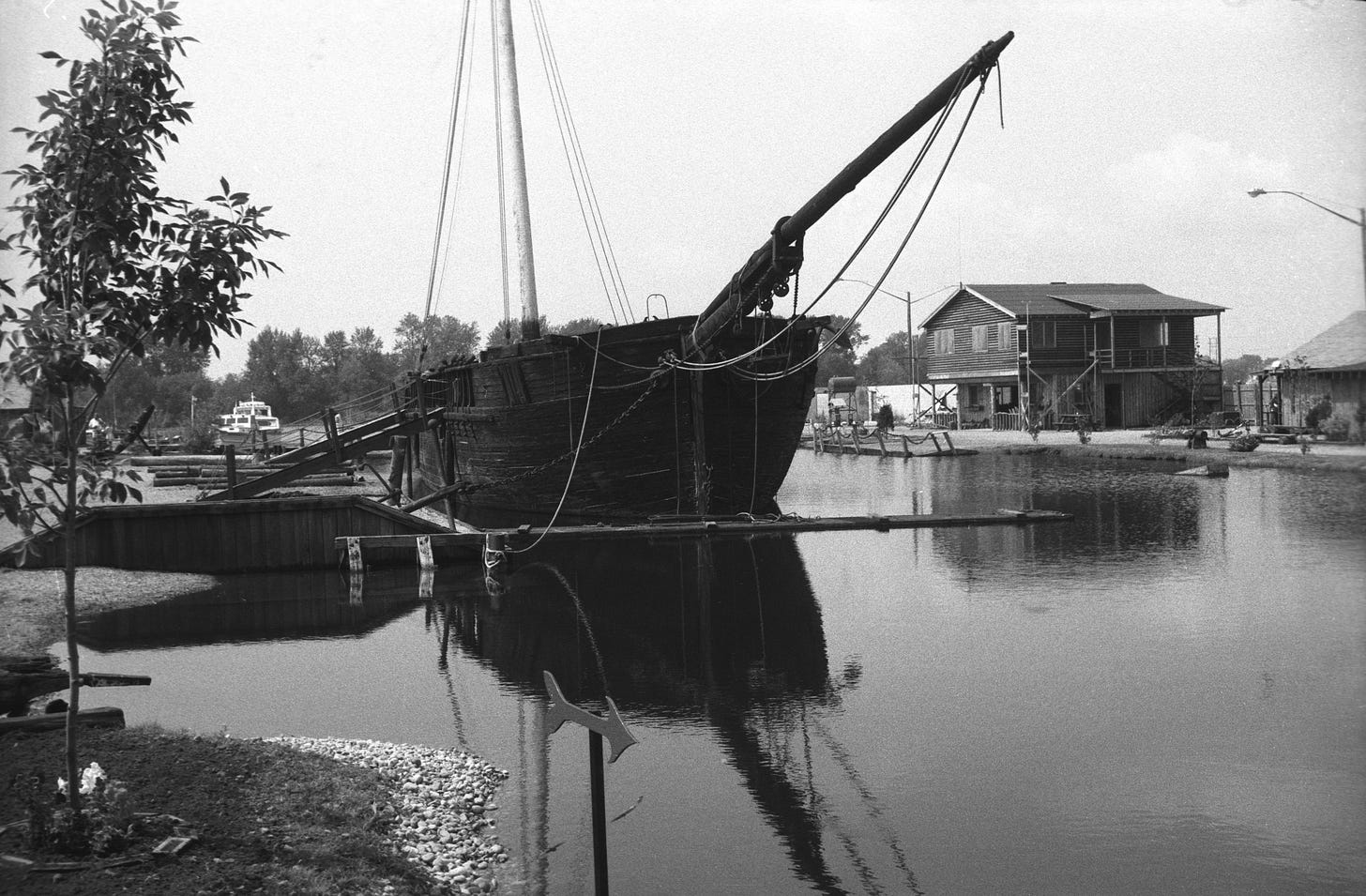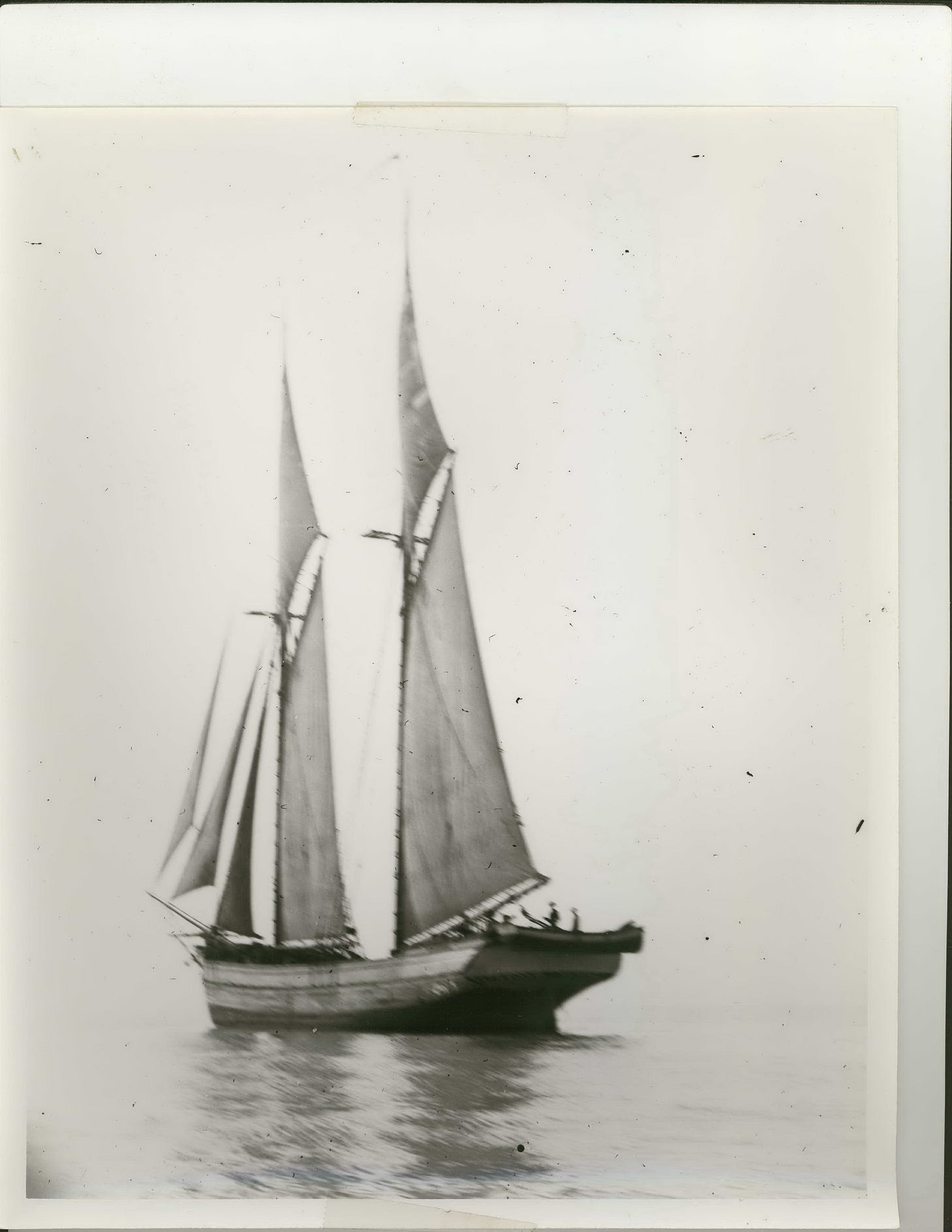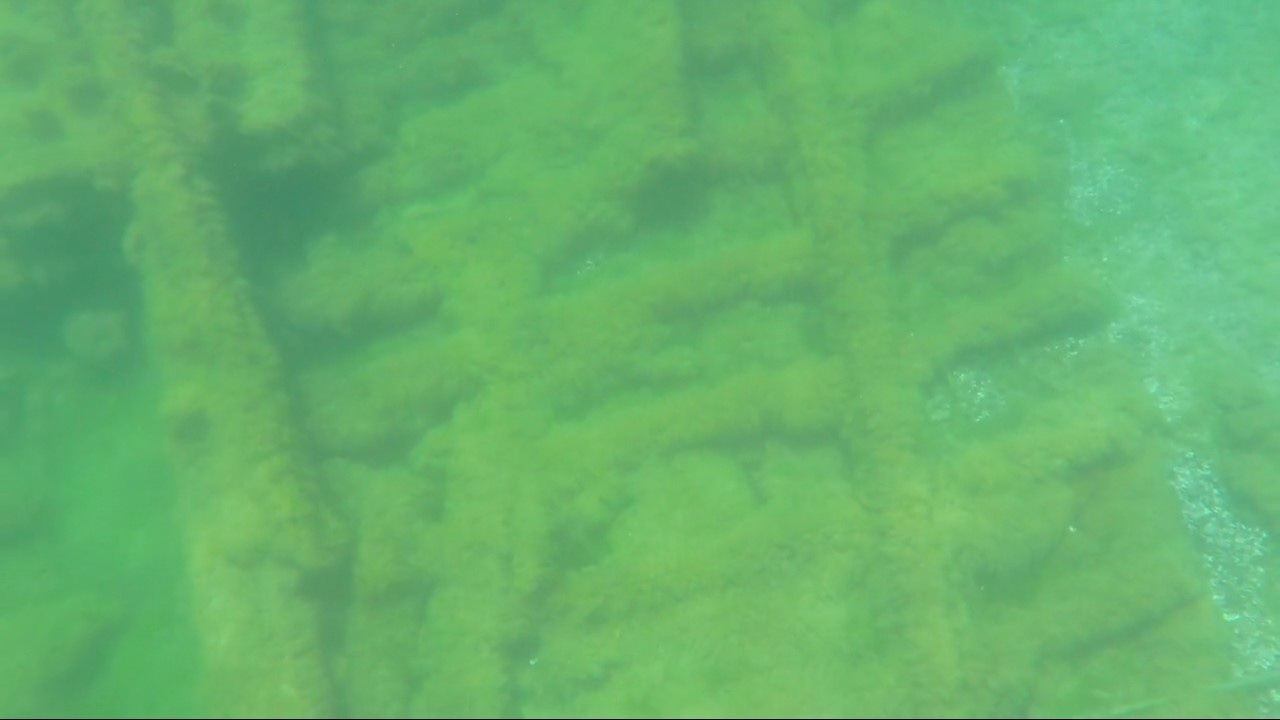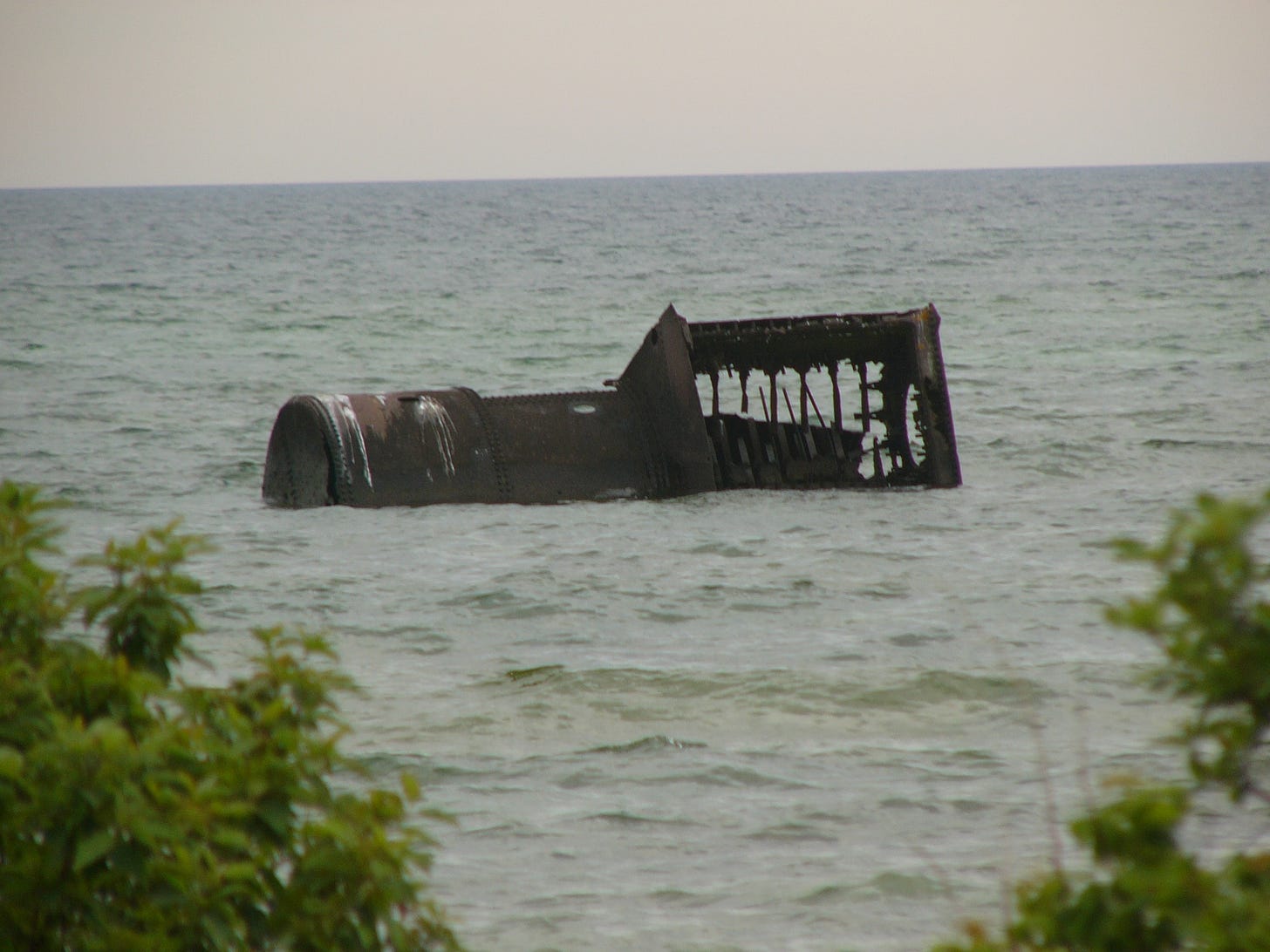We will take a break from bad news after this session and move on to some odd vessels of history that visited Lake Ontario in the 1900’s.
After a book talk I gave a few years ago to a boating group, an older woman came up to me and said, “Never trust the lake.” These are words to take heed of. Last year at least twelve people managed to die in swimming accidents on the NY side of the lake. I didn’t find statistics for fatal boating accidents on Lake Ontario, but almost every year I hear of at least one. (I wrote about a couple of close calls that NY recreational sailors I knew personally experienced in “ Ariadne’s Death” Link here https://www.etsy.com/shop/lakeontarioitems?ref=l2-shopheader-name ).
In the 19th century when fishing and cargo carrying employed thousands of workers, and weather forecasting science was in its infancy, fatalities were far higher. Statistics for the U.S. Life Saving Service on all the Great Lakes cited a thousand lives saved in 140 different rescues during 1882. No doubt the Canadian service performed similar numbers of rescues. Knockdowns, capsizes and sudden sinkings in deep water like those that finished off the Hamilton and Scourge were less common than wrecks near or on shore. But they did happen. One historian estimates that at least two hundred intact wrecks like on the lake bottom.
remains identified as those of the schooner Hartford on a Mexico Bay beach. The three master was lost in 1894. All died including a child whose body washed up on beach. the timbers washed up a couple of years ago. Ships that ended up on the shores of the open lake almost always broke up within a few weeks.
The schooners Baltic, Thomas Street, Blanche, Jenkins, Ocean Wave, and dozens of others were lost by capsize or by being swamped. Often the schooners took all of their crew with them. After the 1840s the shoal draft centerboard schooners generally didn’t carry ballast. They relied on hull form and good seamanship to stay upright when sailing without cargo.
My book Ariadne’s Death has accounts of several famous wrecks, and in the future I’ll revisit the tragic end of the “Belle Sheridan” as told in my novel Widow Maker…( Both are on sale at my Etsy shop- go to susanpgateley.com and hit the Buy Books button.)
In 1969 this two master similar in size to the Belle Sheridan was raised intact from the bottom of Lake Michigan with both her masts which were eventually restepped for her life as a display. But the water logged timbers once exposed to air checked and rotted, and the hull had to be demolished.
One sudden loss of a ship on open water that was witnessed, was that of the schooner “Blanche” that vanished on a moonlit night. Here’s how an imaginary character in the sequel to my novel Widow Maker tells the story: His account is adapted from a CHJ Snider column.
“Hell, I was there. I saw it. It happened early in the year, just like this squall did, but it came at night. It were clear with a big round moon and a stiff south wind. The old man came on deck around midnight and told us the barometer was down like the bottom had dropped out of ‘er. Hard to believe, but we didn’t argue with him. We shortened ‘er right down- but the Blanche,-she came a- booming up from Oswego with that fine breeze aft and everything set.
Young Johnny Henderson had her stepping right along. She was a sight with the shadows and moonlight on her sails and that snow white hull of hers. He hailed us wondering why we were reefed down and the old man shouted back that the barometer had dropped like a stone- but Johnny never heard us. He roared right by and was too far away to hear us.
“Then about an hour later the squall hit us from the north like a runaway freight on a down hill grade. I expect Johnny had the preventer guy rigged on her main boom with that south wind to keep her from jibing while she ran along– when that squall hit from the north, they wouldn’t have had a prayer- With the mainsail tied off it must have gone aback and the wind would have knocked ‘em down flat in a moment. She was deep loaded with *coal...”
Unknown schooner becalmed and awaiting the wind.The “Blanche” may have looked like this vessel.
This true account below comes from the Oswego County Whig newspaper dated July 25 1838. Sterling town historian Susie Parsons shared it with me.
The lives of but few persons furnish incidents as appalling as that given below. The account may be in some of the particulars incorrect, as it was penned in a hurried manner, from the lips of one of the suffers. The new schooner William L. Marcy, Captain Miner… was on the evening of the 10th capsized in a gale of wind, off Mexico Bay.
The gale was preceded by a dead calm. Upon the first appearance of the storm every precaution was made use of to prepare the vessel for its encounter...The progress of the storm could be distinctly traced upon the smooth surface of the water as it came with apparently slow but terrific violence. Its low sepulchral moanings seemed to say to the lookers on, “I soon will chant your requiem.”
The article goes on to describe how the hapless schooner suffered a knockdown to lie awash with “keel in the air”. The owner, captain and two men on deck were immediately swept overboard “as quick as thought”. However, all were able to grab hold of the keel and here they clung. Things were no better in the cabin where two men, a twelve year old boy and the female cook were trapped “rolling and tumbling among the loose furniture and baggage” under and above the water sloshing around. As the cabin filled, the oxygen remaining in the air pocket of the swamped schooner was soon “well nigh exhausted” and death “seemed inevitable”.
One man attempted to carve a hole in the hull with his pocket knife to provide more air, but he struck a metal spike that dulled his blade. Things were looking grim indeed when they heard voices as the men clinging to the outside of the hull were rescued by the crew of another schooner.
One of the rescuers then tied a line around himself and dove under the schooner and thrust his legs into the open skylight windows that had earlier been broken out by one of the trapped men. One by one the victims dove down and grabbed hold to be drawn out and pulled to the surface. The boy, however, couldn’t make it down to the skylight. The rescuers chopped a hole through the hull and pulled him out. “When the hole was cut the discharge of confined air resembled the letting off of steam from an engine.”
coal carrier “Randall” wrecked in 1920 with no loss of life.
I don’t scuba dive but I have enjoyed floating around a few shallow water wrecks. One, the “Conger Coal” burned to the water line and sank in Little Sodus Bay in 1918. Early in the year before the weeds grow up, you can see the timbers of the steamer’s bottom and some of the wreck’s machinery near shore in about ten feet of water at the State Park’s south end.
Another accessible shallow water wreck lies in the lea of Main Duck Island in School House Bay. It, too, was a wooden coal carrier, the Randall. It went down in 1920 just off the beach and the crew made it safely ashore and spent five days with the lighthouse keepers family. Today its timbers are readily visible and I have several water rounded lumps of coal in my pebble collection picked up off the beach.
A Go Pro shot -this is of the remains of the Randall in about ten feet of water in School House Bay.The white stuff on the bottom is bits of zebra mussel shells.
Everyone survived this wreck, but ironically the captain’s son died the next year on the lake the next year. He was then in command of the steamer City of New York that sank in a November gale, a short distance away from the Randall’s grave.
The object above is said to be a boiler. I wonder if anyone reading this knows what ship left it on the doorstep of Main Duck Island light? Update: R. D. White sends along the note from Willis Metcalfe’s Canvas & Steam on Quinte Waters. Thanks Dave. I had forgotten the boat’s name. “On Dec 12 1906 the lake freighter C. Hickox went ashore on the head of Main Duck Island laden with coal.” One has to wonder was the vessel homing in on a sound signal during a zero visibility snowstorm? He practically clobbered the lighthouse if so!!
So the next time the snow blows horizontal and the wind roars in the night and whips up twenty foot waves off shore take a moment to consider the unsung men and women who once traveled the lake under sail. They brought lumber for houses, stone for streets, fish for the table, coal to run the factories and grain for the bread and ale that nourished our ancestors. For some the lake was a grave. But many more worked and survived with competence, skill, pride and, I suspect on a summer day now and then with pleasure. Today we owe them much for the labor that helped build family dynasties and civic structures alike.









